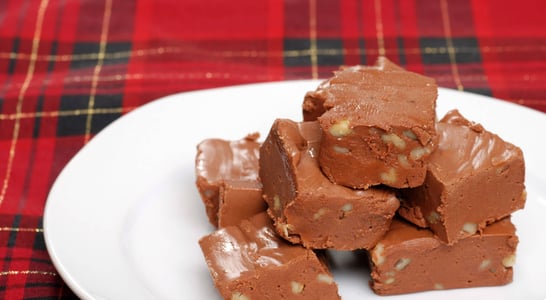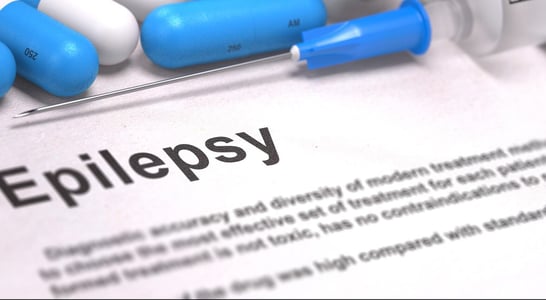
National Fibromyalgia Awareness Day
Learn and spread awareness about the difficult disease known as fibromyalgia, which affects many men and women around the world and as of yet has no cure.
Fibromyalgia is an immobilizing, difficult to manage, and not widely known disease which affects many men and women worldwide.
Because of this, National Fibromyalgia Awareness Day helps to further inform people who may not yet understand the extent of what it does and can do to those who experience it.
How to Celebrate Fibromyalgia Day
Learn More About Fibromyalgia
One thing to do first before observing this day is to read up on Fibromyalgia itself. This will, at the very least, give you a decent introduction to everything we currently know about the disease. Merely showing that you care enough to educate yourself will put you in good stead for joining the fight for spreading awareness.
Learn Symptoms of Fibromyalgia
Symptoms of Fibromyalgia may include heightening skin sensitivity – especially to pain, muscle stiffness, some difficulties sleeping, problems with memory and concentration, extreme tiredness, and headaches.
These symptoms are not uncommon in other diseases – and some sufferers don’t even experience all these symptoms – so it’s easy to see what makes Fibromyalgia so tricky to diagnose.
Get a Support Team
In the battle against it, knowing how to spot Fibromyalgia is the first step in beating it, and to do this, consistent, careful, and considered research is essential for both sufferers. In addition, getting access to help from a team of medical professionals, mental health professionals and supportive community is a good way to begin overcoming and beginning to live a healthier, fulfilled life.
Support People with Fibromyalgia
With this, you can consider donations to charity, and be able to be part of the fight to find more answers. There’s also the option to join charitable teams and be on the other side, taking donations from the generous public.
If you wish to contribute to the charities which raise money and awareness for battling the disease, why not join in with a local charity event – or even start up your own. Simply search online for local charities in your area, and if you can’t find one close enough to be convenient, you know what you can do next!
Charity sports events, bake sales, community gatherings – there’s plenty you can do to support the cause and get the word out there. When it comes to charitable support and spreading awareness about anything, there is no such thing as too small of a contribution.
If you know someone who copes with fibromyalgia, or you simply want to contribute to helping improve the lives of those with it, make sure to take part in Fibromyalgia Day this year, next year, and beyond.
Why Celebrate Fibromyalgia Awareness Day?
Fibromyalgia is a disease that is about seven times as likely to affect women than men, and although it usually is seen in people between the ages of 30 and 50, it can appear in sufferers of any age, whether elderly or child.
This, in particular, captures the attention of a wide range of people, and it gives the reality that it can, indeed, affect anyone at any time.
Fibromyalgia is a difficult disease to diagnose – there isn’t a specific set of testing which can find and diagnose it, and the symptoms that sufferers experience are often attributed to other diseases before Fibromyalgia is accurately identified.
National Fibromyalgia Awareness Day is all about raising awareness for this disease and supporting further research into eventually finding a cure. Those who already suffer from the disease are undisputed fighters, and the more people who understand what Fibromyalgia can and will do, the better chance we have of discovering a way to make their lives better.
History of National Fibromyalgia Awareness Day
National Fibromyalgia Awareness Day was started in 1998 by the folks at the National Fibromyalgia Association.
Awareness and funding are the keys to battling the enigma that is Fibromyalgia, and this day was created for just that. Each year, observers of this day get together and take part in fundraising events, charity runs, tea parties – anything to get the conversation going.
Typically, these events are run because someone has a relative or friend who suffers from this disease. But you do not need to know someone personally affected by Fibromyalgia to make a difference.
If we knew more about Fibromyalgia, could you imagine how much we could improve the lives of those who it affects? It would help recognize patterns better and even catch it earlier, leading to improved treatment. There is no cure for Fibromyalgia, so at the moment, the only option for sufferers is to have several treatments. For example, medication such as painkillers and antidepressants are often prescribed.
Sufferers may also find that lifestyle changes may help, and there’s plenty of support groups available via healthcare services keen to offer support.
Furthermore, while support groups are not always suitable for everybody, doctors will advise personal treatment plans, such as diaries and similar support options, to help people cope with such changes in their lifestyle.
National Fibromyalgia Awareness Day FAQs
Did Florence Nightingale inspire the modern movement for fibromyalgia awareness?
Florence Nightingale, born on May 12th, suffered from a chronic illness resembling fibromyalgia.
Her resilience inspired the choice of her birthday for this awareness day.
Her lifelong advocacy for healthcare reform also aligns with the fight for recognition and better treatment of fibromyalgia.
How did fibromyalgia awareness evolve before it had its own day?
In the late 20th century, fibromyalgia advocacy began with grassroots movements.
Before May 12th was dedicated to awareness, smaller events and campaigns highlighted the struggles of patients. These efforts laid the groundwork for a global recognition day.
What unique fibromyalgia awareness events happen in other countries?
In Canada, patients and advocates hold public art installations to depict the invisible nature of fibromyalgia pain.
In Italy, patient organizations work with healthcare providers to host free screenings and educational workshops on this day. These creative approaches foster understanding across communities.
Are there any notable cultural symbols linked to fibromyalgia awareness?
Beyond the purple ribbon, butterflies have become a symbol for fibromyalgia.
They represent both the fragility of those living with the condition and their strength in overcoming daily struggles. This imagery is often seen in social media campaigns and awareness art projects.
What are some unexpected challenges fibromyalgia patients face?
Many face disbelief from friends or family because the condition is invisible.
Additionally, inconsistent healthcare approaches worldwide mean that patients in some regions lack access to proper diagnosis or treatment. Awareness campaigns work to tackle these barriers.
Have any historical documents hinted at conditions like fibromyalgia?
Descriptions of chronic, widespread pain exist in historical texts, often dismissed as “hysteria” in women.
Some historians believe famous figures like Florence Nightingale or Frida Kahlo might have lived with fibromyalgia or similar conditions. These insights highlight the long-standing challenges of recognition.
Why do some people call fibromyalgia the ‘invisible illness’?
Symptoms like pain, fatigue, and cognitive issues are hard to see, leading to misunderstanding or dismissal.
Patients often appear outwardly healthy, making their struggles invisible to others. Raising awareness helps bridge this gap in understanding.
How do artists with fibromyalgia express their experiences?
Many artists use their work to communicate the realities of fibromyalgia.
Through painting, poetry, and music, they share their challenges and triumphs. These creative outlets also help raise awareness while inspiring others with the condition.
How has technology helped in spreading fibromyalgia awareness?
Social media platforms have transformed awareness efforts. Patients share stories and resources through hashtags like #FibromyalgiaAwareness, creating a global support network.
Online events, live streams, and webinars also expand the reach of education initiatives.
What are some surprising ways people honor Fibromyalgia Awareness Day?
In some communities, people host wellness-focused activities, such as yoga classes or meditation sessions.
These events aim to support physical and mental health while educating attendees about fibromyalgia. Others organize walks or marathons to symbolize the perseverance of those affected.
See what else is happening…
There’s always more going on every month at Days Of The Year. Here are our favorites this month!
Also on ...
View all holidaysNational Nutty Fudge Day
Try making your own fudge, or take a fun trip with friends or family to a nearby tourist town to try out any number of flavor and flavor combinations.
National Limerick Day
Read or write your own five-line limericks to enjoy the humorous, simple formula that has entertained children and adults alike for many generations.
We think you may also like...
SUDEP Action Month
Don’t just raise awareness: on SUDEP Action Month, take actions to help all of society understand sudden death from epilepsy and how to mitigate the risk.
Leukemia and Lymphoma Awareness Month
By fostering understanding and support, raising awareness for these conditions brings hope, funds research, and stands with compassion beside those affected.
National Disability Independence Day
Empowering autonomy, embracing unique abilities, and fostering inclusivity create a world where independence flourishes beyond limitations.
National Obesity Awareness Week
Promoting health and wellness, understanding the impact of lifestyle on well-being becomes crucial for public awareness.








